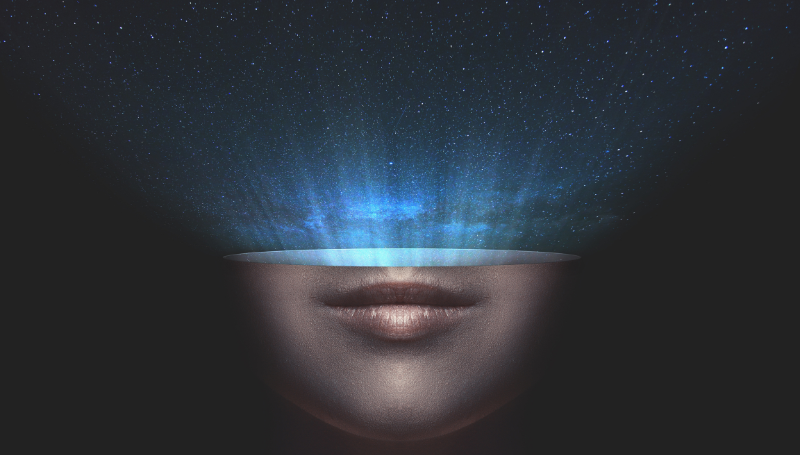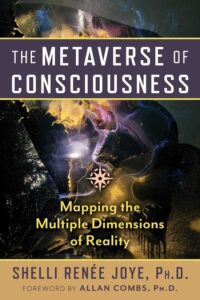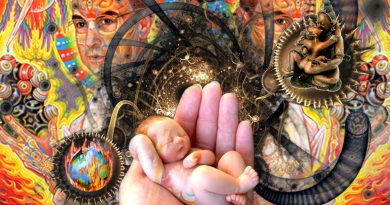The metaverse of consciousness: an exploration of the entirety of the conscious universe
(Global Heart) Shelli Renée Joye explores the “metaverse” as interwoven, hidden dimensions operating in parallel with space and time. Integrating theories of consciousness.
The “metaverse” is rooted in one interconnected consciousness
In this age of confusion, disinformation, and conflicting belief systems, where can we turn to find answers to our most basic questions?
- “Where did we come from?”
- “Why are we here?”
- “Where are we going?” and
- “What can we do to move more safely into the future?”
Looking for answers
These have always been the basic questions, the answers to which can nourish our identity and guide us, both as individuals and as groups. But today these questions have become even more significant because, in a very real sense, we have lost our way. Even nature seems to have turned against us. We can no longer be sure of the direction that our lives are taking, and a familiar world we have always taken for granted is quickly slipping away, lost and transformed at an accelerating pace. If only we knew where to look for a map or a source we might identify to answer such questions, encourage us, and guide us safely into the future!
It is easy to become discouraged and paralyzed by the endless barrage of bad news. “Doom-scrolling” has become not just a buzzword, but an obsession. Millions are losing faith not only in religious traditions, but in governments, in economic systems, and in the very ways we have lived our lives; a growing wave of social media is clearly beginning to doubt our ability to survive as a species. Many are beginning to realize that a radical transformation is required, an immediate shift in the way we live, work, eat, and interact, individually and collectively, if we are to continue to survive as a civilized species.
Where do we even begin to look?
For many, religions offer ways to deal with the crisis. While they give a sense of continuity, stability, and a focus on inner tranquility and peace, their traditional teachings seldom provide answers to the current conflagration of social and environmental emergencies. Traditional religions urge us to pray for peace and patience, but if we want more direct, specific guidance and answers, where do we even begin to look? Our contemporary governments, religions, cultures, and educational systems all seem inadequate to the task.
Yet might there be other sources of knowledge and guidance to help us to deal with the complexities of accelerating environmental collapse, rising fascism, weakening of faith, and loss of hope?
To which of the two groups should we turn?
Scientists tell us that the universe is mechanical, a “dead thing.” They try to convince us that the universe runs like a machine, like some mechanical clock that has evolved only through random chance. In contrast, at the other end of the spectrum, multitudes of priests, artists, and mystics describe with great sincerity how they have been able to experience direct cognitive contact with invisible conscious entities, how they have come to experience “a flow” of awareness among beings that appear to inhabit a vast multidimensional universe. If this is true, the universe is definitely not a “dead thing”; on the contrary, generations of seers, mystics, and psychonauts* have insisted that the universe is full of sentient, conscious entities, or psychoids† at every scale, interacting and evolving in a wild dynamic process throughout the ocean of mysterious energy forms.
To which of the two groups should we turn? Do we assume that all material science assumptions are correct beyond a doubt, that the material universe is, indeed, a dead, mechanical thing? The many technological wonders brought to us by material science (e.g., electricity, computers, vehicles, space stations, the internet, etc.) tend to make us receptive to the dogma often repeated by material science that “other than life on Earth, the universe is dead.”

Dealing with double-edged swords
Clearly many of the successes of technology have been double-edged swords. Two centuries of burning hydrocarbons to power global transportation systems (steamships, automobiles, trains, airplanes) has already radically disrupted the planet’s environment and weather patterns. The ubiquitous effect of social media, powered by digital devices and networks has, rather than bringing people closer together as initially envisioned, so isolated multitudes that they lose all sense of social cohesion, and a growing number of individuals become either lone actors or passionate members of inflammatory subgroups, fostering fragmentation, social chaos, and even violence. But perhaps most destructive of all, though largely unrecognized, has been the stifling effect that the scientific materialist paradigm has had on human efforts to advance the search for answers to what it means to be alive, to be conscious in a universe of space, time, and sensation.
Mystical view of the universe
Yet the religious, mystical view of the universe is equally problematical. It is true that arguments for a living, loving universe are deeply embedded within our cultural traditions over millennia, long before science was even a concept. However, religious tradition and even the language of mythology is quickly discounted by many modern readers, who have become now more open to the languages of science than the messages handed down through their own ancestral traditions.
It appears that both science and religion fail to address our major contemporary issues, both as individuals and collectively as families, nations, and humankind. Where then might we find sources of guidance to restore new meaning, direction, and hope to our lives here and now? Many scientifically trained thinkers down through the ages (including Isaac Newton, Rudolph Steiner, and even Albert Einstein) have insisted that there does exist a rich domain of metaphysical knowledge, guidance, and creativity that is beyond space and time, yet experientially accessible to human beings.

Beyond space and time
While religious traditions and schools of mysticism have empirically developed techniques to communicate with dimensions of being and consciousness that are normally hidden to human awareness. Part of the difficulty lies in the fact that even contemplatives often remain enmeshed in images and metaphors and modes of awareness that are based in space and time dimensions. The key to progress is to learn how to cultivate transspatial, trans-temporal modes of awareness by practicing to develop the skills to go beyond our normal ways of perceiving and thinking in spacetime. Being able to perceive “the Voice of the Silence”* (the transcendental silence of the dimensions beyond space and time) allows a new way of “seeing” to arise, as one begins to perceive regions of ontological reality that project into time and space but that are primarily active within the hidden dimensions.
Virtually all of our modern material science, psychology included, has failed to pursue direct firsthand exploration of the inner spaces of consciousness. Now and in the twentieth century, only a very few of the scientifically trained were moved to break with the mainstream sufficiently to explore inner space through their own direct awareness (e.g., William James, Carl Jung, Teilhard de Chardin, John Lilly, William Tiller, Timothy Leary, Richard Alpert, among others).
Multiple dimensions
This book begins with the premise that, unlike the dead, static, mechanical universe espoused by materialist thinkers, the universe is indeed full of life and consciousness in multiple dimensions. Throughout millennia we find oral and written accounts of human communication with other conscious entities, frequently referred to as angels, spirits, gods. There are many accounts of communication even with recognizable spirits of the dead. These sources are said to have been able to offer guidance and knowledge to the mystics, saints, and shamans who have been able to establish contact with these entities. It is hoped that the integrated discussion of “inner space” presented in this book, supported by contemporary physics, may assist humans to navigate these perilous times.
Neither technical innovations nor political action seem to be able to solve our problems, but perhaps a major awakening in understanding our role within this universe can lead us forward beyond the paralysis into which we have fallen, individually and collectively. In order to make sense of the currently mounting maelstrom of global and individual crises, trained psychonauts might investigate and adapt methods (e.g., contemplation, drugs, physical and mental exercises) to dissolve the normal boundaries of isolated individual awareness in order to establish direct communication with nonhuman psychoidal entities. Like fractals, psychoid consciousness agents exist in many forms, networking at all dimensional levels of inner and outer space.
Critical to this effort is the integration of scientific knowledge of inner space through the development and support of science-trained explorers of consciousness, contemporary psychonauts. An integrated understanding of science and consciousness, physics and metaphysics, should be a requisite for the new generation of scientist-psychonauts embarking on this quest to save our planet and our species.
One widespread misconception, based upon our direct, lifelong sensory experiences as human beings, is that we live solely within the dimensions of space and time. However recent developments in cosmological physics reveal evidence that there exist multiple regions of reality that appear to be beyond our familiar space and time. All dimensional regions of the larger reality may be fully interconnected and perceivable from the space and time dimensions in which we experience our daily lives.
***
The Metaverse of Consciousness by Shelli Renée Joye, Ph.D. published by Inner Traditions International and Bear & Company, © 2025. All rights reserved. Innertraditions.com. Reprinted with permission of the publisher.
***
About the author
Shelli Renée Joye, Ph.D., has degrees in Electrical Engineering, Indian Philosophy, and Consciousness Studies. Early in her career she joined John Lilly to study human-dolphin interspecies communication and sensory deprivation. For several years she studied contemplation with the founder of Naropa University, Chögyam Trungpa Rinpoche. Since completing her doctorate in Consciousness Studies at the California Institute of Integral Studies mentored by Dean Radin, she has authored twenty-two books, including Developing Supersensible Perception, The Electromagnetic Brain, and Tantric Psychophysics. She now lives in Assisi, Italy.
Source: Global Heart
You may also like:
The interconnectedness of our spiritual and human experience





